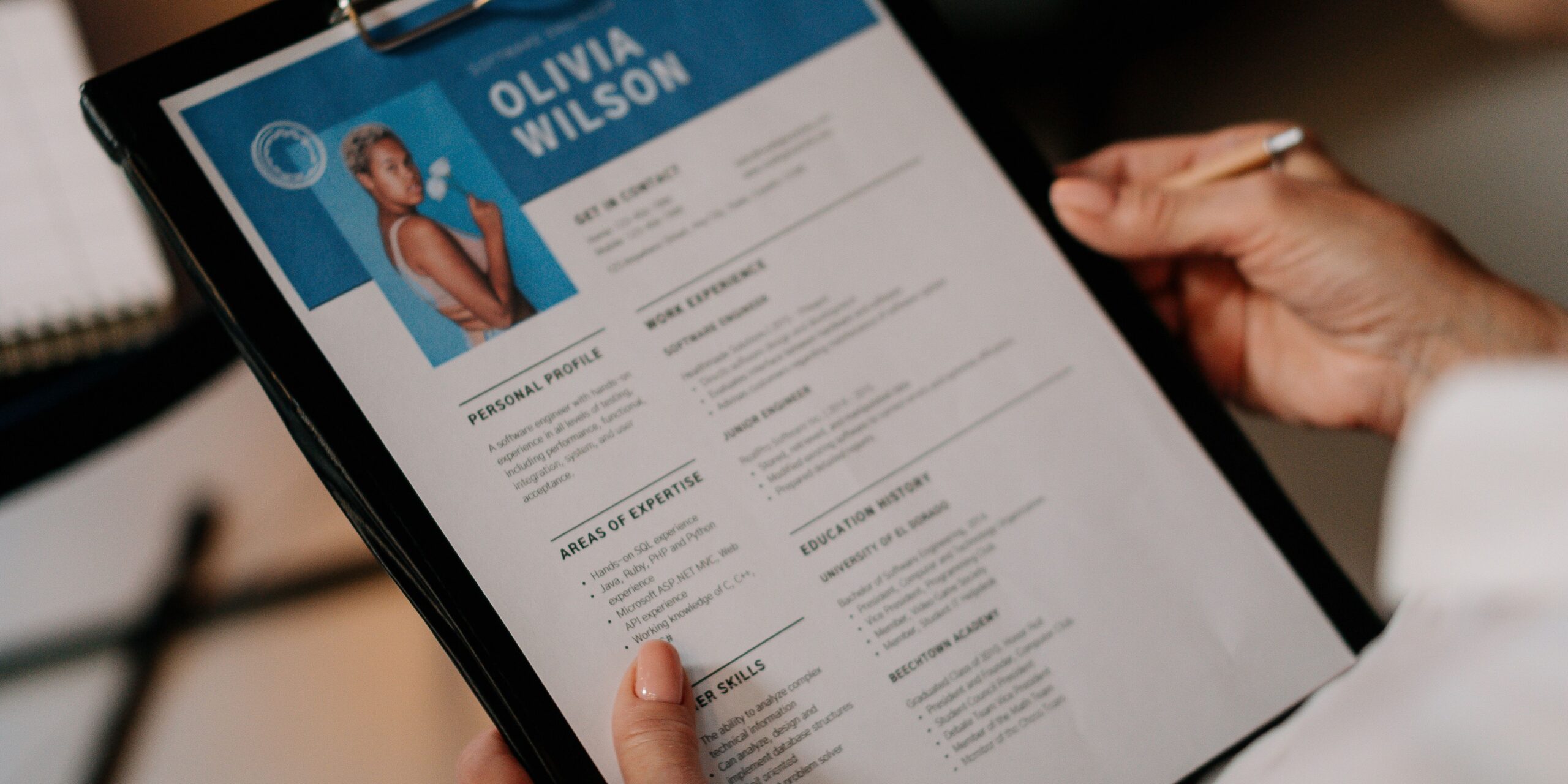Your resume is your first and most crucial introduction to potential employers. We’ve got you covered, from formatting tips to the strategic use of keywords. Get ready to stand out from the crowd and leave a lasting impression with a winning resume that opens doors to your dream job.
In this comprehensive guide, I will walk you through the essential elements of writing a winning resume that effectively showcases your skills, accomplishments, and potential.
Importance of a good resume

- First impression: Your resume is the initial impression that hiring managers or recruiters have of you. It needs to capture their attention and make them curious about your qualifications. A strong resume significantly boosts your chances of getting called for an interview.
- Highlight qualifications: A resume is a document that summarizes your education, skills, and work experience. It is a way to show employers what you know and what you can do. A well-written resume will help employers see if you are a good fit for a job.
- Demonstrate professionalism: A well-organized and mistake-free resume shows that you are a professional who takes your job search seriously. Your attention to detail and concern for making a good impression are evident.
- Tailored to specific positions: Every job opportunity is unique, and a good resume can be tailored to match the requirements of a particular role. By customizing your resume to highlight the skills and experiences most pertinent to the job you’re applying for, you increase your chances of standing out among other candidates.
- Showcase achievements: An effective resume allows you to showcase your accomplishments and illustrate how you have positively impacted previous roles. Including measurable achievements, such as sales figures or successful projects, can impress potential employers and set you apart from other candidates.
- ATS compatibility: Many companies use Applicant Tracking Systems (ATS) to scan and filter resumes before reaching human recruiters. Optimizing your resume with relevant keywords and proper formatting ensures it successfully passes through the ATS screening process and reaches the hands of hiring managers.
- Save employers time: Employers often receive a high volume of resumes for each job opening. A well-organized and easy-to-read resume makes it easier for them to evaluate your qualifications quickly. By facilitating their task, you increase the likelihood of being shortlisted for an interview.
Elements of a winning resume

You can win by tailoring your resume to the specific job you are applying for. Here are some of the key elements that will help you make a resume that will let you stand out:
1. Personal information
The personal information section of a winning resume includes your full name, contact details (phone number and email address), and, if relevant, your professional social media profiles (e.g., LinkedIn). This section is essential for potential employers to get in touch with you easily.
2. Objective statement
The objective statement is a concise paragraph at the beginning of your resume highlighting your career goals and aspirations. You should tailor your resume to the specific job you are applying for, showcasing how your skills and experience align with the employer’s needs.
3. Education
In the education section, you list your academic qualifications, such as degrees, certifications, and relevant courses. Include the name of the educational institution, graduation date (or expected date), and any notable achievements or honors during your academic journey.
4. Work experience
Your work experience section is a crucial part of your resume, where you detail your previous job roles, responsibilities, and accomplishments. Include the job title, name of the company, employment dates, and a concise description of your contributions to each position.
5. Skills
In the skills section, highlight the key competencies that are relevant to the job you’re applying for. These can be both hard skills (technical abilities) and soft skills (communication, teamwork, etc.). Tailor this section to match the job requirements.
6. Awards and honors
This section allows you to showcase any recognitions, awards, or honors you’ve received throughout your academic or professional journey. Including relevant achievements can set you apart from other applicants.
7. Activities and hobbies
Activities and hobbies demonstrate your interests and can provide additional insight into your personality and character. Include extracurricular activities, volunteer work, or hobbies that are relevant to the job or portray you positively.
8. References
The references section indicates that you are willing to provide references if requested. It’s common practice not to include specific references on the resume, but you can mention phrases like “References available upon request.”
Tips to write a winning resume

Customizing your CV increases your chances of being chosen. To write a successful resume, use the guidance given below.
1. Research and preparation
Before you write your resume, do some research on the industry and the job you want. Understand what skills, qualifications, and experience the employers are looking for. This will help you create a tailored resume that shows how you can be valuable to the company.
2. Formatting and structure
A well-organized resume is easy to read and looks nice. Use clear and easy-to-read fonts like Arial or Times New Roman. Divide your resume into sections like contact information, a summary, work experience, education, and skills. Using bullet points can make your achievements stand out and make it easier for recruiters to go through them. Avoid long paragraphs and messy designs that can overwhelm them.
3. Proofreading and editing
Employers prefer to avoid seeing typos or grammar mistakes in resumes. So, after writing your resume, read it carefully to catch any errors. It’s also helpful to get feedback from friends or mentors for a fresh perspective and to spot areas for improvement. A polished and error-free resume shows that you pay attention to details and are professional.
4. Tailoring for each job application
Use a different resume for every job application. Customize it for each position to match the job’s requirements. Highlight the most relevant skills and experiences, and use keywords from the job description. This way, you increase your chances of getting noticed, especially if an Applicant Tracking System is involved. Tailoring your resume shows that you genuinely care about the company and are a great fit for the job.
5 Websites to find best resume templates
In addition to the website mentioned above, these free resume builder apps for Android and iPhone may also entice you.
Conclusion
In a competitive employment market, an outstanding CV or a cover letter can make all the difference for job seekers like you. It serves as the key to opening up amazing prospects and attracting the interest of potential employers. But keep in mind that a resume is merely a tool. Your distinctive value proposition is what sets you apart.
FAQs
Yes, you should customize your resume for each job application. This will help you to highlight the skills and experience that are most relevant to the specific job you are applying for.
Typically, it’s best to include the last 10 to 15 years of work experience. However, you may want to go back further if you have more recent and relevant experience.
Yes, you can include hobbies and interests on your resume. This can help to give recruiters a better sense of who you are as a person and what you’re passionate about.
A good resume is usually one to two pages long. Keep it concise and relevant to make it easy for recruiters to skim and identify your qualifications quickly.
Was this helpful?
Introducing Bhaskar, your tech-savvy neighbor turned wordsmith extraordinaire. Over the past few years, Bhaskar has become the trusted authority for unraveling the mysteries of iOS, Android, macOS, and Windows. Armed with a B.Tech degree, he has dedicated himself to making technology easy to understand for everyone. His expertise shines through his contributions to well-known publications like Guiding Tech, iGeeksBlog, GeekFrost, and MakeUseOf (MUO). Bhaskar excels in creating straightforward how-to guides and comprehensive articles that make the complex tech landscape accessible to all. When he's not diving into the tech world, you'll find him enjoying music or indulging in sports.





